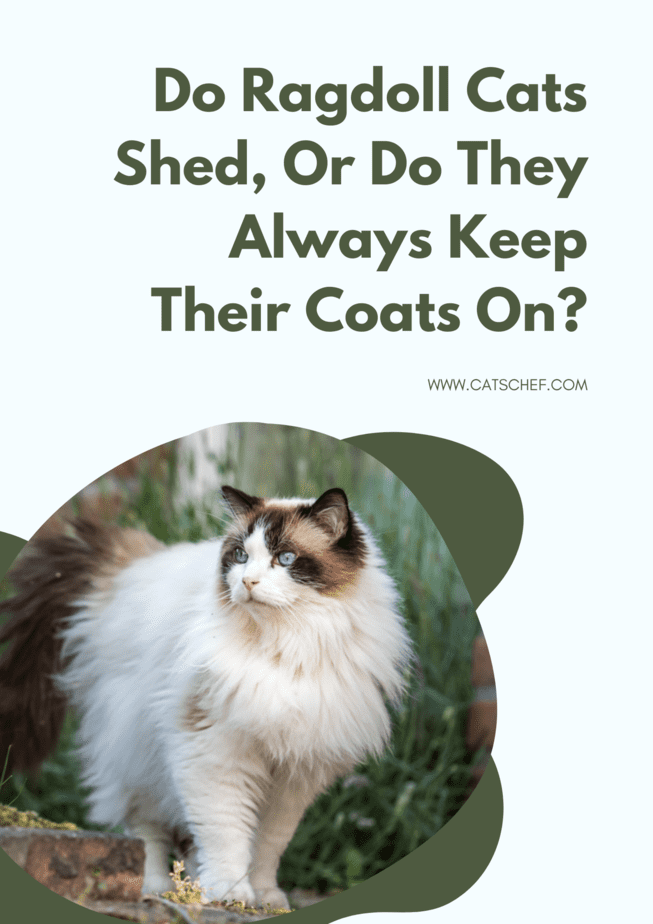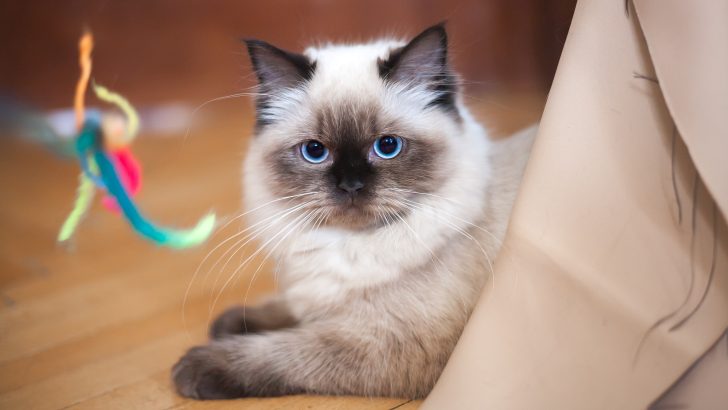Getting a new pet is one of the most exciting events ever. However, we should always research before deciding which breed is the best for us. And since you’re here, I guess you’re trying to learn more about a specific feline. So, do Ragdoll cats shed a lot? Will they be the right choice for you?
Luckily for you, I have all the answers you’re looking for. When I was a kid, my family used to have two beautiful Ragdoll cats, Ginnie and Arya. And since I’m a kind of a person who was always interested in animals, I read tons of books about cats, their breeds, health, food…
However, no matter how many books I read, Ginnie and Arya were the ones who taught me most of the things I know today. I’ll forever be thankful for all the fun times we had together, but also for all the things I’ve learned from them.
And with all the knowledge I have, I can assure you that here you’ll find everything you need to know about Ragdoll cats. So let’s not wait any longer. It’s time to start this fun cat lesson.
An introduction to Ragdoll cats
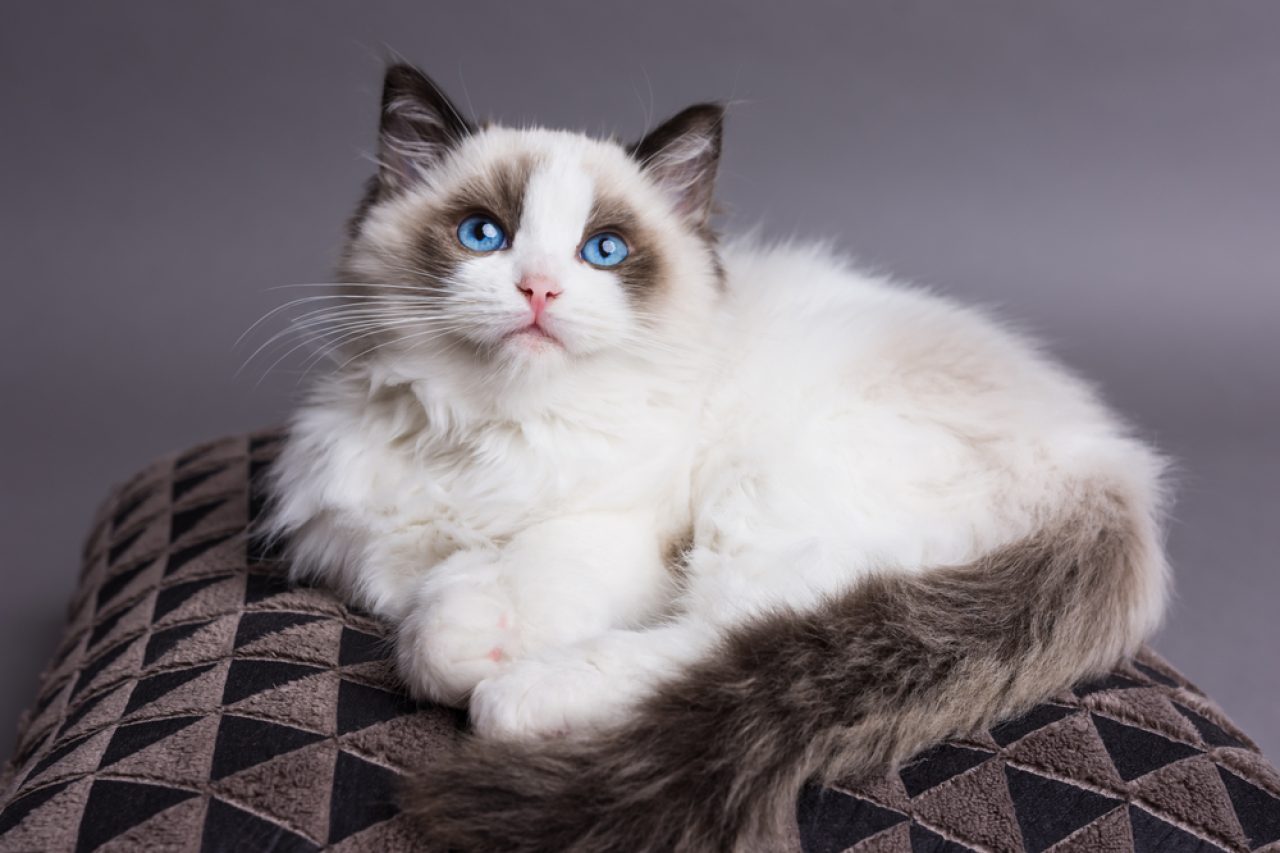
So, do Ragdoll cats shed? To help you understand that better, I first need to explain some basics to you. Maybe you already know this, but repetition is the mother of learning.
Ragdolls are one of the youngest breeds in the world, as they showed up in California in the 1960s. And they got their recognition in the 2000s.
The most common thing all the Ragdoll cat owners say about them is that they are very playful, affectionate, and very fluffy. They are characterized by their beautiful blue eyes and strong bodies. They have beautiful silky coats that make you go “Awww.”
But don’t get fooled by their looks. They are still one of the smartest cats out there.
They grow up much slower than the other breeds, so you’ll get to play with a “kitten” for ages. So if you have a kid, a Ragdoll cat is a perfect option for you. She’ll be as playful as your kiddo!
When it comes to their temperament, they are famous for being one of the breeds that love their owners the most. And they are always in the mood to cuddle and show you their appreciation and love. Sometimes they can be a bit lazy, but when it’s time to play, that trait disappears.
Many people say that Ragdoll cats remind them of dogs – friendly, loyal, lovable, and cuddly. Is there anything sweeter than that?
Do Ragdoll cats shed a lot?
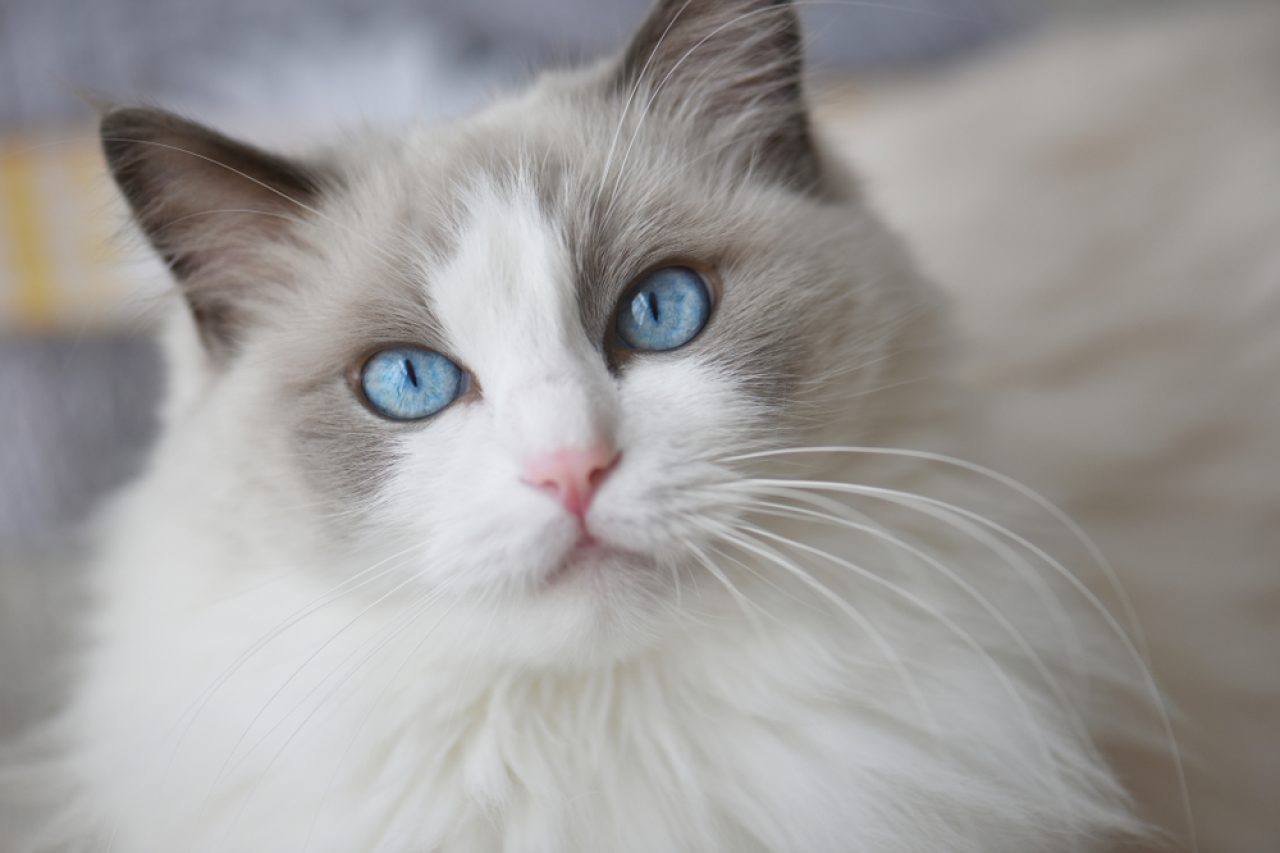
Many people believe that there are cats that don’t shed at all. But unfortunately, such a breed doesn’t exist. And do Ragdoll cats shed? Well, yes. But the good thing is that they are famous for being one of the low-shedding breeds of cats.
The amount of shedding can be different from breed to breed, but also from cat to cat. It’s possible that one Siamese cat sheds a lot while her sister barely does.
There are also some other factors that can influence shedding. One of those factors is the season of the year. Unlike people, cats actually lose their hair mostly during the summer days and not the winter ones.
If you’re looking to get yourself a cat that doesn’t shed a lot, then a Ragdoll cat is a great option. That’s mostly because they don’t have a thick undercoat which is one of the main culprits of shedding.
They lose their hair mostly during the summer times because they’re trying to get rid of the warm winter coat. That’s why you’ll notice a difference when you pet her in December and, let’s say, in April.
There’s going to be much more hair coming off her in April as the weather is getting warmer. That’s especially true if you let her play outside from time to time because she’ll see the differences in seasons.
Cats who are always kept indoors don’t really feel the difference between winter and summer. So their shedding might be the same during the whole year.
What should their brushing routine look like?
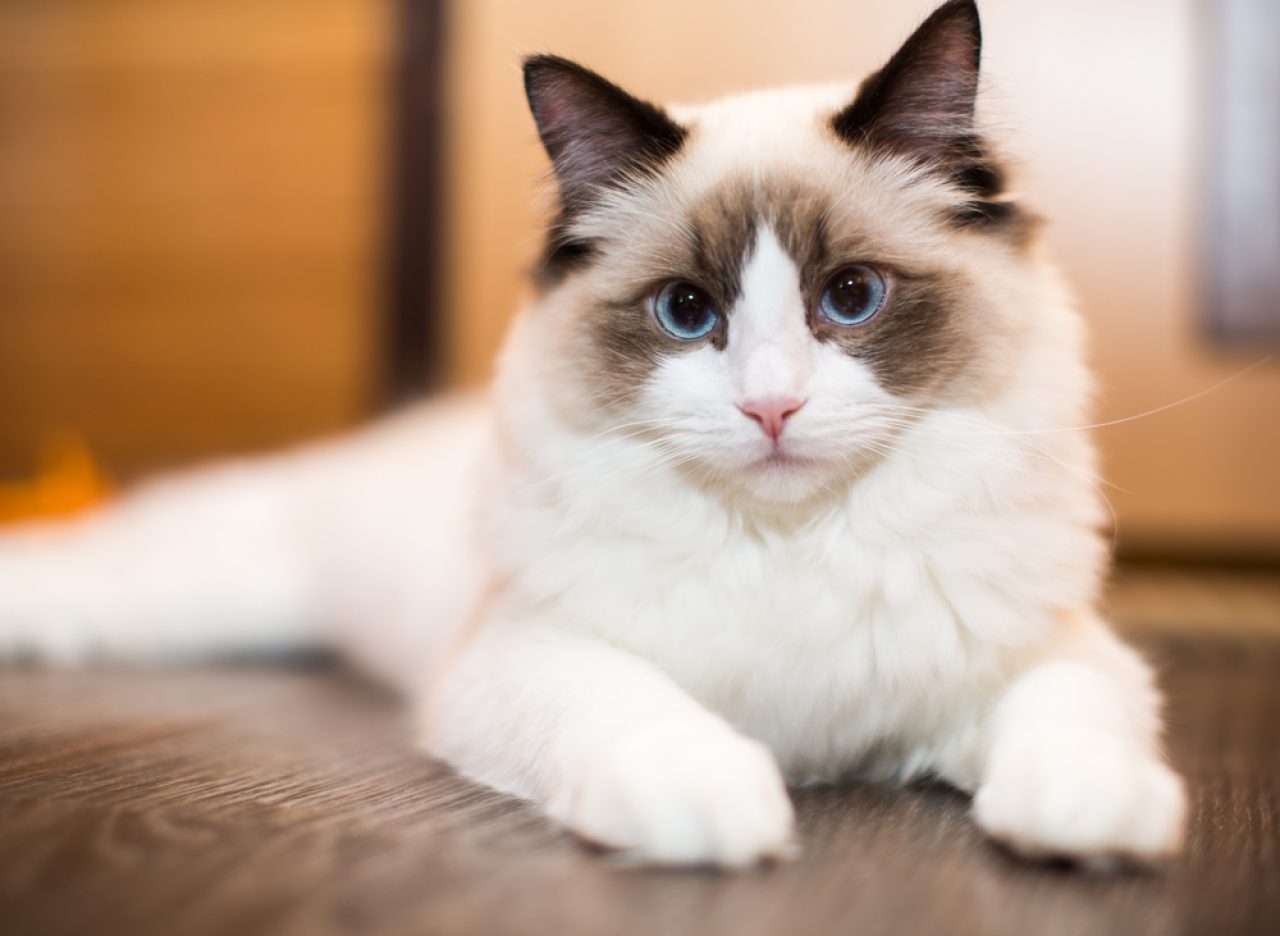
Ragdoll cats often struggle with hairballs and their pet owners need to try to help them in any way they can. Regularly brushing your kitty is mostly enough to prevent any hairballs from forming, and that should keep your fluffball safe.
I’m sure you already know, but most cats aren’t really big fans of brushing. And they often even gag at combs! Not just when a comb touches them but also when they see it from a distance.
Weird, I know! But we also don’t like the thought of chalk squeaking on the blackboard, right? So maybe your kitty imagines herself being brushed and that makes her gag.
The best way to make your kitty hate brushing is to make it a habit from a young age. It’s also a good idea to use a reward system, as cats are easily motivated by food.
Sometimes it’s also possible that your Ragdoll cat will be completely fine with you brushing her unless you try grooming under her legs. Then her whole mood changes, and she’s more than ready to fight you and save herself.
To solve this problem, you can try changing the position. If she’s usually sitting on your legs while you’re brushing her, you can train her to stand. This trick actually worked well for me, with the addition of giving her a few treats afterward.
Is it common for Ragdoll cats to shed dander?
Did you know that cats also have some flakes of dried skin that are found in their animal fur? Just like we can deal with dandruff, kitties can also struggle with it.
It’s actually one of the most common reasons people have cat allergies. As dander flies around the house easily, it’s likely that it will end up on some of your stuff too, and it will easily make you sneeze a bit more than usual.
But do Ragdoll cats shed a lot of dander? Luckily, as I’ve already mentioned, this breed of cats doesn’t have huge undercoats, which means they don’t shed as much dander as some other breeds of cats.
But is there a way to stop it completely? It’s not like you can actually wash your kitty’s coat with Head&Shoulder, so what should you do?
Brushing her regularly will help you get rid of the dead skin and fur before it travels around your house, but there’s no proven way that it stops shedding from occurring completely.
What to do when your Ragdoll cat is shedding?
Now that we know there isn’t a single cat breed that doesn’t shed at all, we need to learn what to do about it. There are a few tips and tricks that can help you out if you feel like your Ragdoll cat’s shedding is more severe than you can handle. Let’s take a look at what I’ve prepared for you!
When I lived with Ginnie and Arya, we never had many problems with their hair. However, on a few occasions during hot summer days, we needed to figure out a way how to deal with it as my granny had a cat allergy. The following tips helped us a lot.
1) Groom her regularly
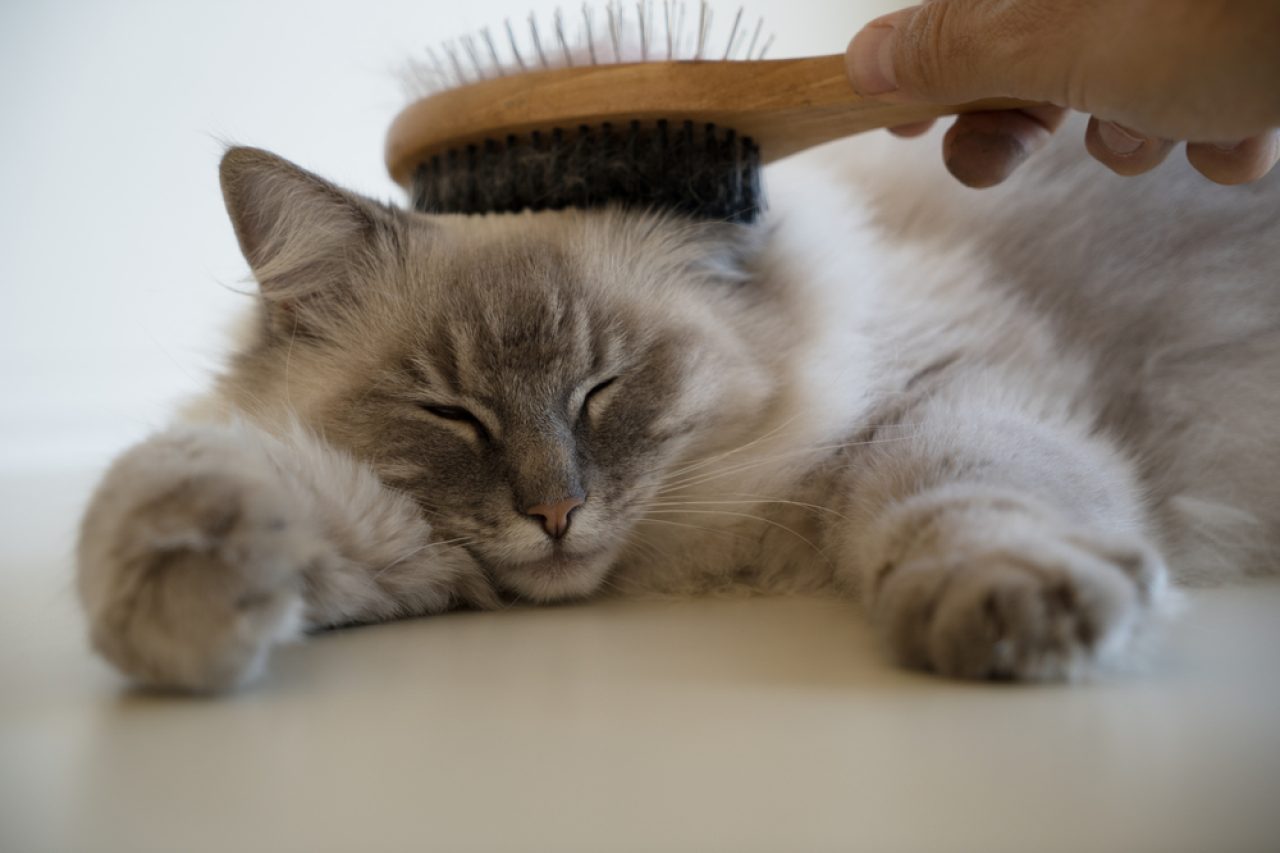
As mentioned before, one of the most important things is to groom your kitty regularly. Her hair (that should’ve been groomed) will fly around your house and spread everywhere if you don’t help your cat get rid of it.
So, get her used to brushing, and don’t forget that it’s best your start doing it when she’s just a little kitten as that way, it’s most likely she’ll accept it as a part of her routine.
2) Always vacuum your house
The second tip I have for you is to vacuum your house as often as possible. No matter how often you brush your kitty, there are always gonna be a few hidden hairs that will reappear as soon as you finish brushing your fluffball.
To prevent them from tricking you, you should vacuum your house whenever you get a chance. That’s how you’ll get rid of all those hairs that are hiding in your carpet or on your brand-new sofa.
3) Try to get rid of as many allergen traps as possible
If you’re struggling with allergies, or you’re expecting guests who are, then it’s a great idea you try to get rid of as many allergen traps as possible. Allergen traps are mostly carpets, sofas, and other fabrics that can catch dust, hair, or dander easily.
Of course, you can’t get rid of your sofa, but what you can do is use a couch cover. It’s a great idea to choose one made out of a fabric that doesn’t catch mentioned substances easily. For example, you can use silk, rayon, or viscose.
4) Change her diet

One of the most often causes of Ragdoll’s shedding is a wrong diet. Sometimes we focus on giving our kitty the food she likes the most, and we forget it’s actually more important to give her something that has enough nutrients, vitamins, and proteins that will keep her healthy.
If you think that she’s shedding more than usual, and you’re pretty sure it has nothing to do with the season of the year, it’s likely her food is causing her immune system to drop. Try making her some new meals that will be rich in all those ingredients she needs.
You can also try giving her supplements that are full of vitamins, and adding fish oil to her regular lunch in order to make her stronger and healthier. That should also stop her from shedding a lot.
5) Use a dampened piece of clothing
And finally, the last tip I have for you is to use a dampened piece of clothing. But why? Every time you brush your cat, there’s still some hair left on her body that you can’t reach. And using a dampened piece of clothing will help you get rid of all the hidden hairs.
You can even use it to clean your furniture and clothes that are full of your fluffball’s hair. This tip has been my best friend ever since I got my first cat! I’m sure it will work well for you too.
Final thoughts
I hope you got your answer to “Do Ragdoll cats shed?” and that you’ve also learned many new interesting facts and tips and tricks about them. If you’re wondering whether you should get a Ragdoll cat, I just want to tell you that they truly are one of the fluffiest and loveliest cats on planet Earth.
And that definitely makes them a great choice, especially if you have kids! They’ll enjoy playing together, and you’ll never have to worry if one of them is feeling lonely because the answer will be “No.” They’ll always have each other!
